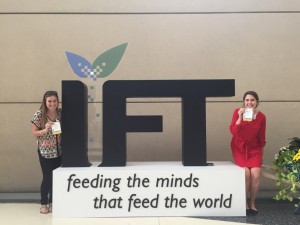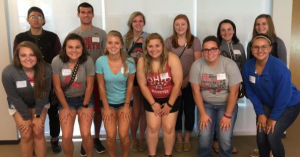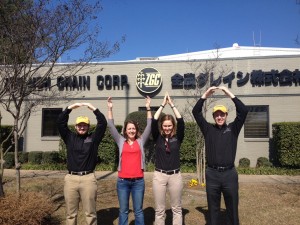By: Natalie Miller, Agribusiness and Applied Economics | Washington Courthouse, OH
In mid-December, I woke up at 3:00am and started making the 30-hour journey to Ushuaia, Argentina. After a few days there, I would start a 48-hour journey to Antarctica by ship. It seems crazy just how many days of travel are required to step foot on the world’s southernmost continent, but after experiencing the beauty of Antarctica, it only seems fitting that long plane rides and chancing sea sickness in the Drake Passage are the prices tourists pay to step foot on the highest, driest, windiest, and in my opinion, most awe-inspiring place.
At Ohio State, there are lots of study abroad opportunities presented to students and this program which focused on the human impact on Antarctica’s fragile environment was extremely interesting to me, mostly because I thought it would be cool to travel to Antarctica. To be honest, I had always known that it was important that we take care of our environment, especially having grown up on a corn and soybean farm where taking care of the land is essential for profitability, but I never had any emotion tied to environmental stewardship outside of where I could see the benefits. Yes, I recycled, tried to use plastic sparingly and not leave the lights on unnecessarily. I participated in countless trash pickups as a 4-H and FFA member, but I always found myself wondering things like, “What difference does my decision to use a reusable K-Cup rather than a disposable one actually make when I’m just trying to get some caffeine, and is it really that big of a deal if I forget a reusable grocery bag?” All of my questions were answered after my Antarctic experience.
Once we arrived in Antarctica, I began to understand what happens when places are largely untouched by humans. It had always been hard for me to fathom how something as small as a footprint can alter a penguin’s everyday routine, but as I watched penguins trek through snow deeper than them, making their own network of penguin highways, I began to understand how one human footprint in a penguin highway can ruin weeks of penguin sweat equity. In short, we as humans have the power to preserve our world’s beauty.
After five days on Antarctica, it was time for the second leg of a two-day ship journey back to South America, meaning that nearly all of the passengers would stick on another behind-the-ear seasickness patch and that presentations by the OneOcean staff would resume. As I watched Catherine, a wildlife aficionado, present about climate change in a way I had never before had it explained, I began to understand the impact that my actions have on our environment. Our world is warming, but some parts of it are actually cooling, hints the name climate change. The part that’s really important is that as humans we have changed the composition of our atmosphere. If you’re looking for a less than two minute explanation, checkout this video: https://www.youtube.com/watch?v=-n4A0BssFd0.
As I made the journey to Ohio, I left with an understanding of how my environmental footprint, even though I’m one in more than seven billion, can have an impact. My mindless decision to recycle is now one that’s fueled by a desire to help the adorable penguins, seals and whales that made my study abroad experience in Antarctica remarkable. Most importantly, I now know that climate change isn’t all gloom and doom. It’s undeniable that our atmospheric composition is changing, but it’s also undeniable that the tiny steps we take towards conservation can change the world.









